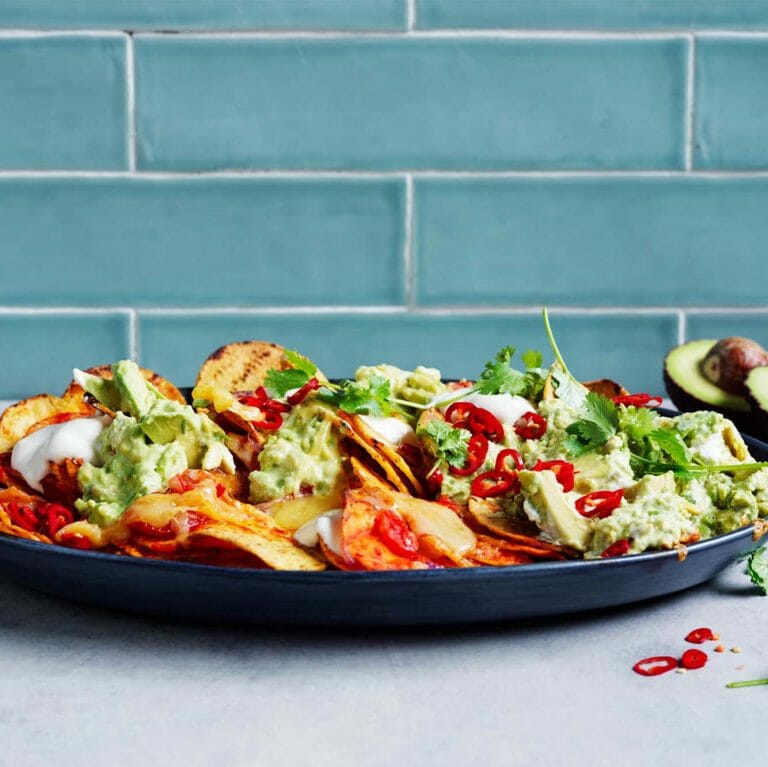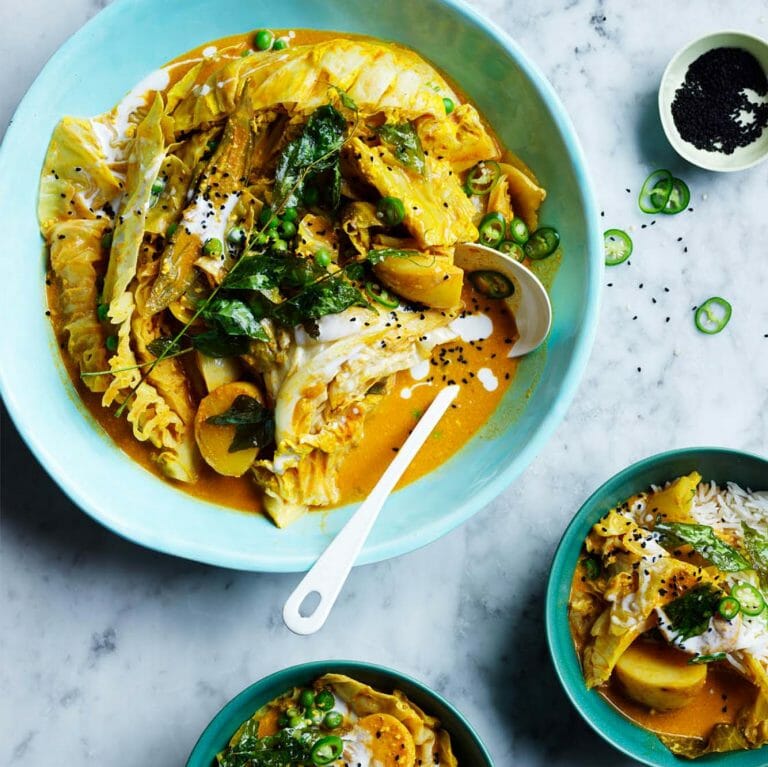Vegetarian one-pot pilaf with cauliflower, carrots, peas and corn

Vegetarian one-pot pilaf with cauliflower, carrots, peas and corn
Servings: 4
PSSSST… I have a confession: recipes make me nervous. I know that seems odd, considering you're about to read one of mine, but there's something about following someone else's steps that really doesn't suit me (I'm a Gemini). The kind of dishes I'm drawn to are those 'pinch of this, punch of flavour of choice' types, where you fill in the blanks. That's why I love pilaf. Aka pulao, plov, paella… If it's a fully-loaded, one-pan rice dish, chances are, 'tis but a rose by any other name. For every iteration there are infinite ifs and maybes. "If you don't have this, try that" or "maybe a handful here" and the like. It's no surprise that the earliest 'recipe' for pilaf, by Persian scholar Avicenna (Ibn Sina) in the 10th century, was more a list of variations and substitutions than a step-by-step. And even less surprising that it appears in one of his medical texts, considering it's also a heartwarming, carb load that satisfies on even the coldest nights. I'd love to know what you do with your pilaf — it might just get added to our repertoire too.
10 minutes
PRINT
Ingredients
- 6 shallots banana or French, soaking in cold water for at least 5 minutes. This makes them way easier to peel. In a pinch you can substitute with a brown onion, diced.
- ½ small cauliflower
- 3 Dutch small-ish carrots
- 4 tbsp (60ml) olive oil
- 1 ½ cup long-grain rice basmati
- 3-4 garlic cloves crushed
- 1 ½ tsp curry powder
- ½ tsp brown sugar
- 2 tsp salt flakes
- 500 ml (2 cups) vegetable stock plus another cup of water to cover the rice
- 1 cup frozen peas
- 1 cup frozen corn
- Good crack of pepper
- Lemon cheeks to serve
- Chopped soft herbs like coriander or parsley, if you're that way inclined, to serve
Instructions
- Drain shallots, lop off the top and bottom, then cut lengthwise twice to split each shallot into quarters. Peel off the skins. Soaking them in water makes this job much easier.
- Hold the cauliflower upside down, with the florets in your palm. Pull the florets off towards you so that they snap off the stalk at their natural point. Halve any florets bigger than a golf ball.
- Peel the carrots of their skin (save this for stock!), then use the same peeler to strip long ribbons off the carrots. Any bits that are too hard to peel are to be munched on as 'chef snacks' as you cook or handed off to any tiny fists in your vicinity.
- Heat a large heavy-bottomed pan (that has a lid) for 2-3 minutes on medium, until your hovering palm feels the emanating warmth.
- Pour in half of the olive oil (2 tbsp) and add the shallots and cauliflower florets to the pan, making an effort to let as much of the veg access the pan's surface as possible. Sauté on medium-high for 5 minutes until the shallots are coloured and cauliflower browned and caramelised. Pull out the cauliflower with tongs and reserve. (If you're using an onion in place of shallots, pop it in the pan on its own with the 2 tbsp of olive oil, listen for the sizzle, then turn the heat down and close the lid for 5 minutes. Take the lid off, add the cauliflower, and proceed with the rest of the recipe.)
- Add rice to the shallots in the pan, pour in the remaining 2 tbsp of the olive oil, and stir in the garlic, curry powder, sugar and salt. Swish the contents around to get friendly on a medium heat, the rice going glossy and the shallots softening further.
- Pour stock and 1 cup of water over the contents of the pan, add cauliflower and carrot strips, and bring everything to the boil. At this point, drop the heat to very low. If your pan looks anything like mine (heavy, lidded, little chance of steam escaping) pop the lid on, set the timer for 15 minutes and walk away. Spin some salad leaves, stir some other pots — just generally live your life. If you're at all concerned about the capacity for your pan's lid to keep the heat in, pop a layer of foil over the top of the pan, then squash the lid down (this is also a neat trick if you're ever cooking rice in a dodgy pot using the absorption method).
- After 15 minutes, return to the pan, add the corn and peas on top, set the timer for another 5 minutes and then walk away again.
- When this timer goes off, return to the pan, stir the contents about, taste and correct for seasoning (this means adding an extra pinch of salt or two), then whack the lid back on and leave it off the heat for another 10 minutes. This should give any residual liquid a chance to absorb and any rice granules left on the edges to get themselves tidied up. To serve, arrange lemon cheeks (around the pan if serving at the table, or on each plate) and then garnish with herbs from a height.
Notes
Tips
Vegetables can change with the seasons: Use strips of pumpkin or sweet potato to replace the carrot. Maybe try beans, broccoli or brussels sprouts instead of — or as well as — the cauli. You might even like to pop in some bits of leftover roast veg (or meat!) to flavour your rice.
Change up the fat: Your pilaf might use ghee instead of oil, or the schmaltz (dripping) and pan juices from your last roast chicken.
Top it with: Nuts, or blobs of yoghurt.
Vegetables can change with the seasons: Use strips of pumpkin or sweet potato to replace the carrot. Maybe try beans, broccoli or brussels sprouts instead of — or as well as — the cauli. You might even like to pop in some bits of leftover roast veg (or meat!) to flavour your rice.
Change up the fat: Your pilaf might use ghee instead of oil, or the schmaltz (dripping) and pan juices from your last roast chicken.
Top it with: Nuts, or blobs of yoghurt.






